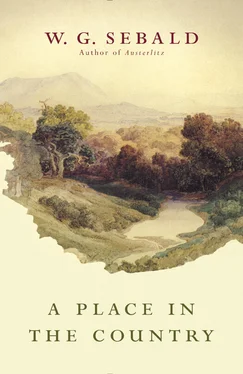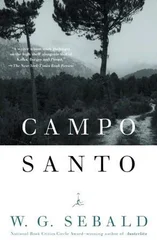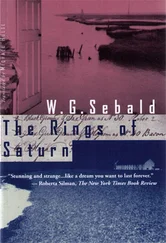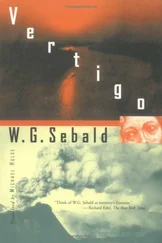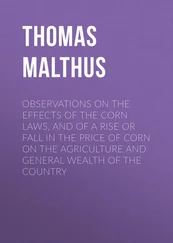But let us continue. As the fantastical elements in Walser’s prose works increase, so, too, their realistic content dwindles — or, rather, reality rushes past unstoppably as in a dream, or in the cinema. Ali Baba, quite hollowed out by unrequited love and pious devotion to duty in the diligent service of the most cruel of all princesses, and in whom we may easily recognize one of Walser’s alter egos — Ali Baba one evening sees a long sequence of cinematic images unfold before his eyes: naturalistic landscapes like the many-peaked Engadin, the Lac de Bienne, and the Kurhaus at Magglingen. “One after another,” the story continues, “there came into view a Madonna holding a child on her arm, a snowfield high in the Alps, Sunday pleasures by the lakeside, baskets of fruit and flower arrangements, all of a sudden a painting representing the kiss Judas gave Jesus in the Garden of Gethsemane, with his fat face, round as an apple, almost preventing him from carrying out his plan; then a scene from a Schützenfest , and, civility itself, a collection of summer hats which seemed to smile contentedly, followed by expensive crystal, porcelain, and items of jewelry. Ali Baba enjoyed watching the pictures, each quickly dissolving and being replaced by the next.” Things are always quickly dissolving and being replaced by the next in Walser. His scenes last only for the blink of an eye, and even the human figures in his work enjoy only the briefest of lives. Hundreds of them inhabit the Bleistiftgebiet alone — dancers and singers, tragedians and comedians, barmaids and private tutors, principals and procurers, Nubians and Muscovites, hired hands and millionaires, Aunts Roka and Moka and a whole host of other walk-on parts. As they make their entrance they have a marvelous presence, but as soon as one tries to look at them more closely they have already vanished. It always seems to me as if, like actors in the earliest films, they are surrounded by a trembling, shimmering aura which makes their contours unrecognizable. They flit through Walser’s fragmentary stories and embryonic novels as people in dreams flit through our heads at night, never stopping to register, departing the moment they have arrived, never to be seen again. Walter Benjamin is the only one among the commentators who attempts to pin down the anonymous, evanescent quality of Walser’s characters. They come, he says, “from insanity and nowhere else. They are figures who have left madness behind them, and this is why they are marked by such a consistently heartrending, inhuman superficiality. If we were to attempt to sum up in a single phrase the delightful yet also uncanny element in them, we would have to say: they have all been healed.” Nabokov surely had something similar in mind when he said of the fickle souls who roam Nikolai Gogol’s books that here we have to do with a tribe of harmless madmen, who will not be prevented by anything in the world from plowing their own eccentric furrow. The comparison with Gogol is by no means farfetched, for if Walser had any literary relative or predecessor, it was Gogol. Both of them gradually lost the ability to keep their eye on the center of the plot, losing themselves instead in the almost compulsive contemplation of strangely unreal creations appearing on the periphery of their vision, about whose previous and future fate we never learn even the slightest thing. There is a scene which Nabokov quotes in his book on Gogol, where we are told that the hero of Dead Souls , our Mr. Chichikov, is boring a certain young lady in a ballroom with all kinds of pleasantries which he had already uttered on numerous occasions in various places, for example: “In the Government of Simbirsk, at the house of Sofron Ivanovich Bezpechnoy, where the latter’s daughter, Adelaida Sofronovna, was also present with her three sisters-in-law, Maria Gavrilovna, Alexandra Gavrilovna, and Adelheida Gavrilovna; at the house of Frol Vasilievich Pobedonosnoy, in the Government of Penza; and at that of the latter’s brother, where the following were present: his wife’s sister Katherina Mikhailovna and her cousins Rosa Feodorovna and Emilia Feodorovna; in the Government of Viatka, at the house of Pyotr Varsonophyevich, where his daughter-in-law’s sister Pelagea Egorovna was present, together with a niece, Sophia Rotislavna, and two stepsisters: Sophia Alexandrovna and Maclatura Alexandrovna”—this scene, none of whose characters makes an appearance anywhere else in Gogol’s work, since their secret (like that of human existence as a whole) resides in their utter superfluity — this scene with its digressive nature could equally well have sprung from Robert Walser’s imagination. Walser himself once said that basically he was always writing the same novel, from one prose work to the next — a novel which, he says, one could describe as “a much-chopped-up or dismembered Book of Myself.” One should add that the main character — the Ich or “I”—almost never makes an appearance in this Ich-Buch but is left blank, or rather remains out of sight among the throng of other passing figures. Homelessness is another thing Walser and Gogol have in common — the awful provisionality of their respective existences, the prismatic mood swings, the sense of panic, the wonderfully capricious humor steeped at the same time in blackest heartache, the endless scraps of paper, and, of course, the invention of a whole populace of lost souls, a ceaseless masquerade for the purpose of autobiographical mystification. Just as at the end of the spectral story The Overcoat there is scarcely anything left of the scribe Akakiy Akakievich because, as Nabokov points out, he no longer quite knows if he is in the middle of the street or in the middle of a sentence, so, too, in the end it becomes almost impossible to make out Gogol and Walser among the legions of their characters, not to mention against the dark horizon of their looming illness. It is through writing that they achieved this depersonalization, through writing that they cut themselves off from the past. Their ideal state is that of pure amnesia. Benjamin noted that the point of every one of Walser’s sentences is to make the reader forget the previous one, and indeed after The Tanners —which is still a family memoir — the stream of memory slows to a trickle and peters out in a sea of oblivion. For this reason it is particularly memorable, and touching, when once in a while, in some context or another, Walser raises his eyes from the page, looks back into the past, and imparts to his reader — for example — that one evening years ago he was caught in a snowstorm on the Friedrichstrasse in Berlin and how the vividness of the memory has stayed with him ever since. Nor are Walser’s emotions any less erratic than these remembered images. For the most part they are carefully concealed, or, if they do emerge, they are soon turned into something faintly ridiculous, or at least made light of. In the prose sketch devoted to Brentano, Walser asks: “Can a person whose feelings are so many and so lovely be at the same time so unfeeling?” The answer might have been that in life, as in fairy tales, there are those who, out of fear and poverty, cannot afford emotions and who therefore, like Walser in one of his most poignant prose pieces, have to try out their seemingly atrophied ability to love on inanimate substances and objects unheeded by anyone else — such as ash, a needle, a pencil, or a matchstick. Yet the way in which Walser then breathes life into them, in an act of complete assimilation and empathy, reveals how in the end emotions are perhaps most deeply felt when applied to the most insignificant things. “Indeed,” Walser writes about ash, “if one goes into this apparently uninteresting subject in any depth there is quite a lot to be said about it which is not at all uninteresting; if, for example, one blows on ash it displays not the least reluctance to fly off instantly in all directions. Ash is submissiveness, worthlessness, irrelevance itself, and best of all, it is itself pervaded by the belief that it is fit for nothing. Is it possible to be more helpless, more impotent, and more wretched than ash? Not very easily. Could anything be more compliant and more tolerant? Hardly. Ash has no notion of character and is further from any kind of wood than dejection is from exhilaration. Where there is ash there is actually nothing at all. Tread on ash, and you will barely notice that you have stepped on anything.” The intense pathos of this passage — there is nothing which comes near it in the whole of twentieth-century German literature, not even in Kafka — lies in the fact that here, in this apparently casual treatise on ash, needle, pencil, and matchstick, the author is in truth writing about his own martyrdom, for these four objects are not randomly strung together but are the writer’s own instruments of torture, or at any rate those which he needs in order to stage his own personal auto-da-fé—and what remains once the fire has died down.
Читать дальше
